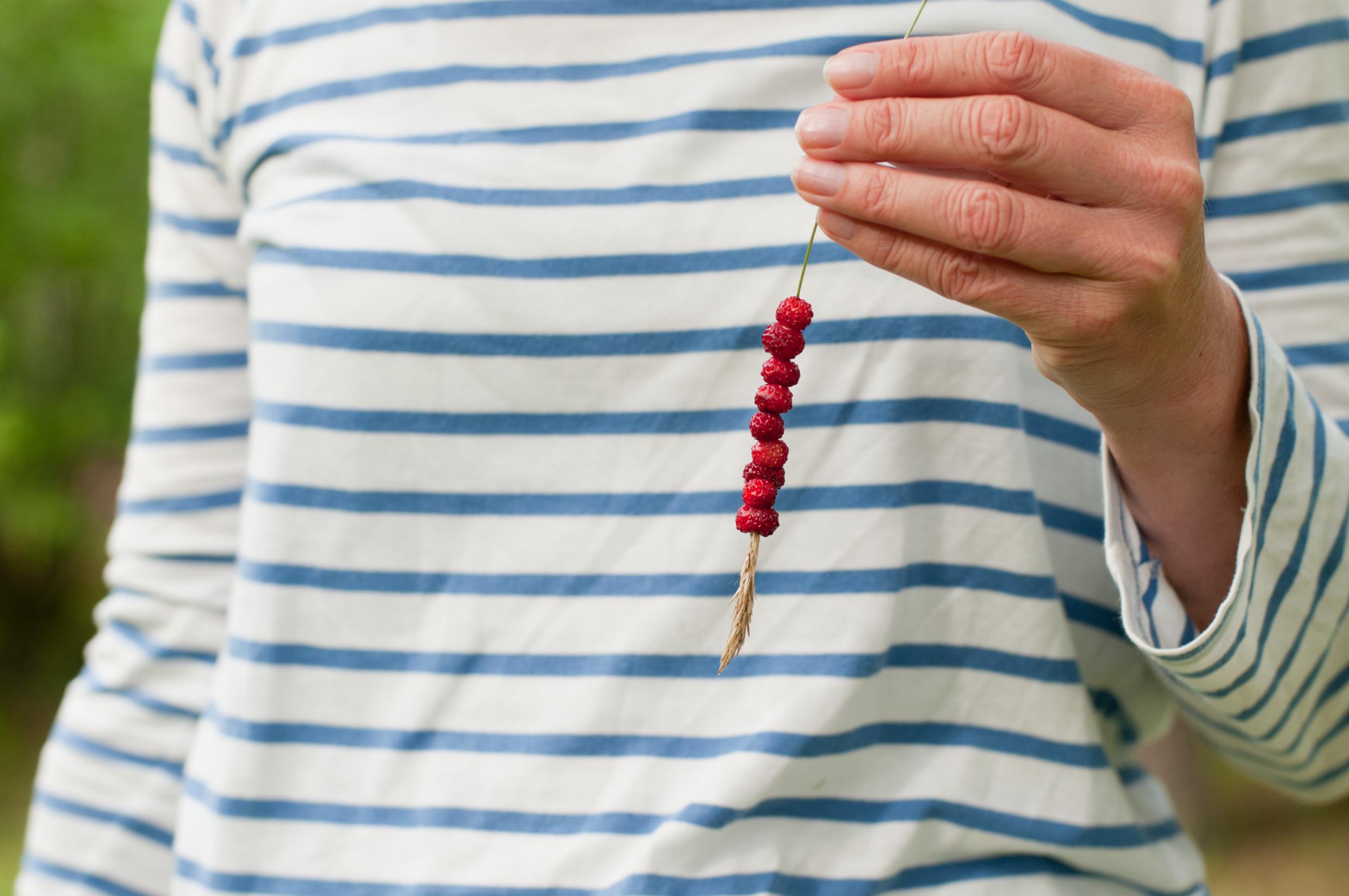
Swedish food safaris on land – from foraging to truffle hunting
Foragers rejoice – everyone can roam Sweden’s countryside while hunting for Mother Nature’s nutritious offerings. During late summer and early autumn, the woods abound with berries in different colours. But if you want to find the forest gold – chantarelles – you might need an expert guide.
The foraging culture is strong in Sweden. Come late summer, nature lovers of all ages – top chefs included – spend days in the forest collecting berries, mushrooms and plants. Locating natural treasures such as blueberries and mushrooms is as enjoyable as feasting on them. And thanks to Sweden’s unique Right of Public Access, anyone is free to set off on a soul-soothing food safari with a basket in hand. The only thing you have to pay, is respect for nature and the animals living there.
Chanterelles
Chanterelles, also known as forest gold, are the most sought-after and popular mushrooms to pick in Sweden.
Photo: Helena Wahlman/imagebank.sweden.se

Chanterelles
Photo: Helena Wahlman/imagebank.sweden.se

Picking mushrooms
Photo: Lindsten & Nilsson/imagebank.sweden.se

Mushroom
Photo: Tina Stafrén/imagebank.sweden.se
Find the hidden gems with expert help
While it might be tempting to wander into the forest alone, we strongly recommend letting an experienced forager accompany you. Not only will you avoid the risk of picking inedible – or even poisonous – berries and plants, but an expert guide will also help you locate elusive delicacies. The chanterelle – also known as the "forest gold" – is notoriously shy, and it sometimes takes a trained eye to find it, hiding in clusters under pine needles, moss and fallen trees. Stockholm-based Niki Sjölund – chef and wilderness guide – is one of many experts who hold mushroom foraging courses.
Swedes also have a penchant for foraging in more cultivated forms, seeking out farms and orchards across the country that offer pick-your-own (‘självplock’ in Swedish) fruit and vegetables, ranging from strawberries and apples to potatoes and sweetcorn. Seafood lovers are in luck, too – lobster and mussel safaris are also part of the Swedes’ penchant for relying on nature’s generous pantry.
Blueberry picking
In the late summer Swedish forests are full of delicious blueberries.
Photo: Johan Willner/imagebank.sweden.se

Blueberry picking
Photo: Johan Willner/imagebank.sweden.se

Blueberries in the forest
Photo: Gösta Reiland/imagebank.sweden.se

Cloudberries
Photo: Emmie Bolmstedt/Visit Sweden

Lingonberries
Photo: Anders Tedeholm/imagebank.sweden.se

Wild strawberries
Photo: Helena Wahlman/imagebank.sweden.se
The forests of Sweden are berry heaven
So, where do you go if you fancy a spot of berry or mushroom picking – or indeed a handful of wood sorrel (also known as sour grass)? Simply head for the trees, and since 70 per cent of Sweden is covered in woods, you’ll never have to venture too far before stumbling into a sizable chunk of forest, even if you’re based in a city.
Hit the right spot in the forest and you’ll be surrounded by a sea of blue or red – and sometimes a mix of the two, since blueberries and lingonberries thrive in the same environment. You’ll even come across them in marshier terrain further north. In these arctic climes, you’ll also find the “gold of the marshland” – the cloudberry. These beautifully amber, raspberry-shaped delights are vitamin-packed and delicious served – northern Swedish style – with waffles and whipped cream.
Raspberries, meanwhile, grow wild in most of the country, as do rosehips and nettles (best picked in spring). Wild strawberries are a joy to find in little decorative clusters soaking up the sun in forest clearings, along country lanes or on the edges of flower meadows. Swedes even have an expression for a favourite, treasured place or hidden gem: ‘smultronställe’, which translates to “wild strawberry place”. Having experienced the joy of stumbling upon a spot of intensely sweet wild strawberries, it’s easy to see why it has become a symbol of magic delight.
Truffle hunting
Truffle hunting on Gotland.
Photo: Region Gotland

Truffle hunting
Photo: Region Gotland

Truffle, Gotland's "black gold"
Photo: Region Gotland
On the hunt for Gotlandic truffle
Those on the hunt for truffles should head to the island of Gotland, off the east coast of Sweden. A truffle hotspot – there’s even an annual festival dedicated to this rare treat – the Gotland Truffle Festival. Come November, you’ll be able to immerse yourself in every aspect of this regional delicacy.
During this weekend-long event, you’ll get to visit a truffle market and participate in truffle hunts and demonstrations while mingling with truffle experts – and possibly even with the dogs trained to sniff them out. The Truffle Academy will hold a seminar focusing on truffle cooking and cultivation, and there will be a glittering award ceremony, during which the truffle chef of the year will be crowned. There is also a possibility to book private truffle hunts on a few dates.
There are plenty of opportunities to devour truffles, too – restaurants all over the island offer special truffle-focused menus during this period.



